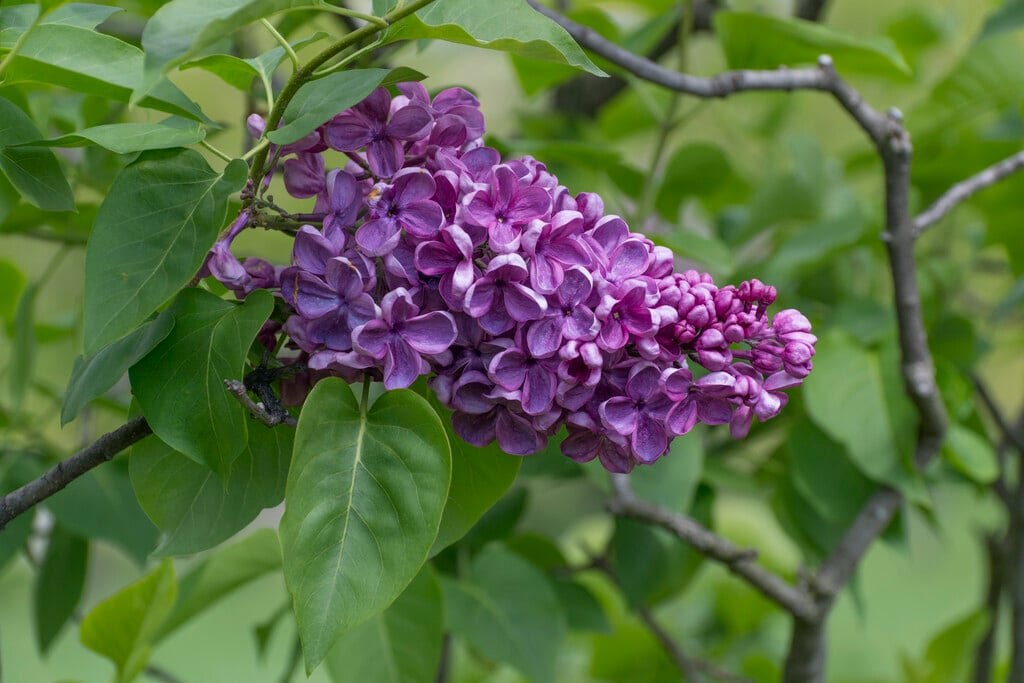Syringa vulgaris 'Masséna'
lilac 'Masséna'
A vigorous deciduous shrub or small tree, to around 5m high, with an upright to spreading habit and broadly oval to heart-shaped green leaves. Dense, upright clusters of fragrant, magenta-coloured flowers are produced in late spring
Size
Ultimate height
4–8 metresTime to ultimate height
5–10 yearsUltimate spread
4–8 metresGrowing conditions
Moisture
Moist but well–drained, Well–drainedpH
Alkaline, NeutralColour & scent
| Stem | Flower | Foliage | Fruit | |
| Spring | Pink Purple | Green | ||
|---|---|---|---|---|
| Summer | Green | |||
| Autumn | Green | |||
| Winter |
Position
- Full sun
- Partial shade
Aspect
South–facing or West–facing
Exposure
Exposed or Sheltered Hardiness
H6Botanical details
- Family
- Oleaceae
- Native to GB / Ireland
- No
- Foliage
- Deciduous
- Habit
- Bushy
- Genus
Syringa can be deciduous shrubs or trees, with simple, entire or rarely pinnate leaves and conical panicles of small, very fragrant, 4-lobed tubular flowers in late spring or early summer
- Name status
Accepted
How to grow
Cultivation
Thrives in well-drained, fertile, humus-rich alkaline to neutral soils. Will tolerate some light shade but flowering is best in full sun. Mulch well in spring
Propagation
Propagate by softwood cuttings or by layering in early summer, by grafting in winter or by chip budding in midsummer
Suggested planting locations and garden types
- Cottage and informal garden
- Low Maintenance
- Flower borders and beds
- Hedging and screens
Pruning
Minimal pruning required, trim immediately after flowering if necessary (see pruning group 1)
Pests
May be susceptible to lilac leaf-mining moth, thrips and willow scale insects
Diseases
May be susceptible to lilac blight, honey fungus, phytophthora, powdery mildews and bacterial canker
Get involved
The Royal Horticultural Society is the UK’s leading gardening charity. We aim to enrich everyone’s life through plants, and make the UK a greener and more beautiful place.
